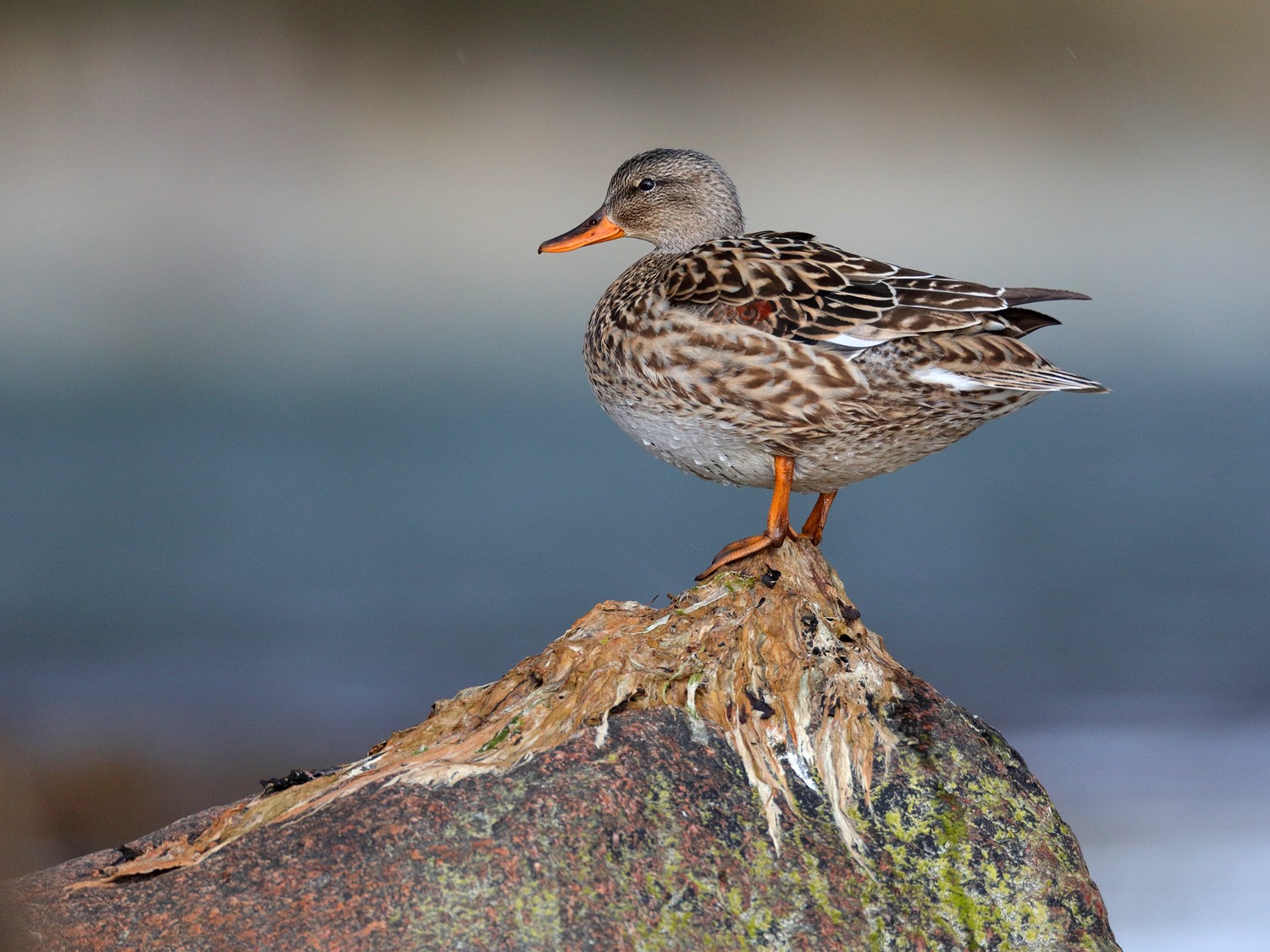Gadwall
Gadwall (female). Photo: Kilvar Kessler
Introduction
Latin Anas strepera
Estonian Rääkspart
Also known as: no known names
Status in Estonia
Breeding and migratory bird with very few individuals wintering.
Description
The gadwall is slightly smaller than the mallard, with a slimmer body and narrower wings. A whitish underbelly can be seen in flight. The main characteristic are a small white secondaries. The male bird in definitive plumage has a tawny brown head, black under tail, grey and finely streaked body, pale greyish-beige long shoulder feathers and a grey-black beak. In flight, the white secondaries and the black and maroon coloured patch on the upper wing are clearly visible. The female bird looks like a mallard but has a whitish belly, little white secondaries, blackish top of the beak, orange beak sides and darker brownish grey tail feathers.
Size
Body length 46–56 cm, wingspan 78–90 cm, body mass 850–1000 g.
Gadwall (male). Photo: KIlvar Kessler
Similar species
Mallard, garganey, Northern pintail.
Distribution
The gadwall is found throughout Europe’s middle latitudes, from Western Europe to the steppes of Kazakhstan and Western Siberia. It is an unevenly spread breeding bird in Estonia.
Population
Estonia has 2000–3000 breeding pairs.
Occurrence in Estonia
It usually arrives around mid-April and departs in late October. In some winters, up to five birds remain in Estonia to winter; the vast majority migrate to England and the Netherlands in the southern part of the North Sea to spend the winter, but many birds ringed in Estonia have also travelled to Western Europe’s rivers and lakes, including France, Spain, Portugal and Italy.
Diet
It eats aquatic and terrestrial plants and plant parts, fruit, nuts and, in the summer, invertebrates, which are also part of the chicks diet at first.
Habitat
The gadwall prefers grassy regions on small islands; rocky and shingle areas with no vegetation are unsuitable. It also breeds in beach meadows, coastal lagoons and inland lakes. The bird prefers to build its nest on the border of a laughing gull or tern colony.
Nesting
The gadwall is a monogamous bird. During the courtship ritual, the male shows off his black breast and white secondaries by bobbing his head. A courting flight is also occasionally undertaken. The nest is hidden in tall grass. It builds a nest out of plants that grow near the nest site and lines it with feathers. The female begins laying eggs while the nest is still being built. She lays between 8–11 eggs, which she incubates for 24 to 27 days. The male bird leaves during the incubation period. After hatching, the chicks can forage for food on their own; however, the mother leads them to look for food after a day or two. Chicks learn to fly when they are 48–56 days old.
Conservation status and protection
Not under protection. The danger is primarily predation.
Distribution and population in Lääne County
The gadwall is a common migratory and breeding bird in Lääne County. The birds build their nests in the reed beds that surround Matsalu and Haapsalu bays as well as on sea islands with higher vegetation.
Gadwalls can be seen practically anywhere near Matsalu and Haapsalu bays. During autumn migration, it is most common at Haapsalu’s Tagalaht Bay, where up to 1000 birds stop in September and October.

